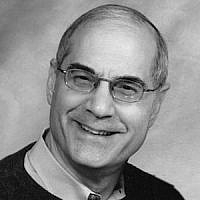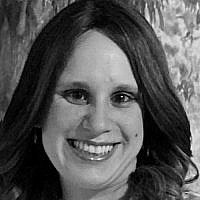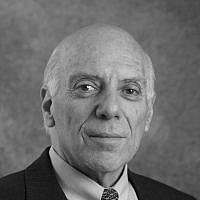Modern Orthodoxy: A Guide for the Perplexed — Orthodox Judaism and change
There have been several articles about Orthodox Judaism in the Jewish Standard in the last few months, one by Rabbi Shmuel Goldin and another by Rabbi Tzvee Zahavy. Rabbi Zahavy responded to a questioner’s appeal for clarification about what modern or open Orthodoxy is. He defined “authentic” Orthodoxy by the degree it refuses to change any aspect of traditional belief or behavior. Therefore, according to him, modern Orthodoxy’s rapprochement with contemporary values and the changes that rapprochement brings means that modern Orthodoxy — a term that he seems to say is an oxymoron — is not actually a form of Orthodoxy at all. At best, if it is Orthodox in any way, it is on the road out of the Orthodox camp.
Contrary to general perception, including Rabbi Zahavy’s, change in practice is far from foreign to Orthodox Judaism. For example, women’s Jewish education as it existed in Eastern Europe in the nineteenth and early twentieth century was completely changed when Sarah Schenirer founded the Bais Yaakov schools in 1917. Previously, women received no formal Jewish education; boys universally attended cheder and some of them — the intellectual elite — attended yeshiva. This new educational system for girls had the approbation of the three of the most influential Orthodox rabbinic figures of the period: R. Yisrael Meir Kagan, representing the Lithuanian yeshiva world, and the Gerer and Belzer rebbes from the Polish chasidic world. Bais Yaakov soon was taken under the wing of Agudath Israel, an ultra-Orthodox religious and political movement active in Germany and Poland. Clearly, this shows that change was not foreign even to the right wing of the Orthodox community, and it is not foreign to the Orthodox community today.
Orthodox Judaism is not monolithic
Diverse expressions of Orthodox Judaism in the Orthodox camp have been the norm rather than the exception. Orthodox groups frequently have been at war with one another — one of the best examples is chasidim and its opponents. Modern Orthodoxy, centrist Orthodoxy, and ultra-Orthodoxy simply continue a historical pattern that has characterized Orthodox Jewish life since the eighteenth century, and in some instances earlier. That each of these varieties of Orthodox Judaism declares the other illegitimate or unrepresentative of “authentic” Orthodoxy does not validate those claims.
Rather than participate in this battle, my aim here is to present a sense of modern Orthodoxy by laying out its basic attributes. I believe that once this is accomplished, those who are perplexed about what modern Orthodoxy stands for will see how it is part of an Orthodox continuum, even as it diverges from alternate expressions of Orthodox Judaism.
Beliefs and behaviors characteristic of modern Orthodoxy
1. Modern Orthodoxy shares with Orthodoxy in general the belief that God revealed the Torah to the Jewish people. It holds that the foremost expression of Torah revelation is halacha, Jewish law, as developed by the sages in the Mishnah, the Talmud, and the literature that developed from these formative works.
2. While modern Orthodox Jews and their leadership carefully weigh the variety of opinions of great halachic authorities, past and present, it is modern Orthodoxy’s position that halachic decisions for a particular community ultimately are the province of that community’s mara d’atra — its local rabbinic authority. Since diversity is the mark of the halacha, starting with Mishnah and Talmud and going forward in the literature that developed from them, uniformity of halachic decisions is not required, because each community and its individual members face specific circumstances.
Modern Orthodoxy’s view of the autonomy of local rabbinic authority is where modern Orthodoxy parts company with centrist and ultra-Orthodox (henceforth, charedi) forms of Orthodox Judaism. These two forms of Orthodox expression overwhelmingly rely on those whom they consider “the great men of the generation” — the gedolei ha-dor — to make halachic decisions for their communities. Local pulpit rabbis are relied upon for relatively straightforward questions on Shabbat and holy day observance, kashrut, mourning, and family purity laws. Beyond this, halachic questions are directed to the “great men.”
In charedi and some centrist circles, these halachic decisors’ views are considered to be da’as Torah, the single authentic Torah viewpoint on any given matter. Modern Orthodoxy rejects the notion of da’as Torah on two grounds: a) it denies the principle of diversity in halachic interpretation; and b) it grants the authority to adjudicate halachic matter only to charedi or right-wing decisors. These groups exclude erudite modern Orthodox rabbinic scholars from the halachic decision-making process because they are never considered sufficiently learned or pious.
3. Thoughtful modern Orthodox Jews recognize that while halacha is the lifeblood of authentic Orthodox Jewish communities, it is not sufficient for living the ideal Torah life. Rather, meta-halachic values, such as compassion (chesed), equity (tzedek), honoring the dignity of all human beings because they are created in the image of God, and adjudicating according to the spirit of the law as well as its letter (lifnim mi-shurat ha-din) must inform halachic decision-making in order to establish an authentic Torah life.
Here, too, modern Orthodoxy parts ways with centrist and charedi Orthodoxy. In perhaps overly simplified terms, modern Orthodoxy holds that ethical and moral principles that conform to the best values in contemporary society should be used as guidelines in deciding halachic questions, especially those of a serious and often vital nature. For centrist and charedi Orthodox Jews, Jewish law encompasses Jewish ethics and is their source.
The situation of women in Judaism demonstrates the difference between these two approaches. Modern Orthodoxy agrees with the contemporary ethical position that inequality in status between individuals is unacceptable. This view is not just a bow to modernity; it is rooted in the Torah’s statement that human beings are created in God’s image. This idea of equality is summed up in the tradition’s statement: “I call upon heaven and earth to witness for me that whether one is a non-Jew or Jew, or whether one is a man or a woman, or whether one is a male or female slave, according to the actions of that person does the holy spirit (of God) rests on him/her” (Yalkut Shimoni to the Book of Judges, section 42).
Therefore, modern Orthodox halachic decisors seek to extend the range of participation of women in Jewish religious life, especially in the synagogue, to the extent that halacha allows. They are working assiduously to create a complete solution to one of the greatest scandals of Orthodoxy — get refusal, which chains women to dead marriages. Further, the entire modern Orthodox community supports high-level Torah education for women who seek it, and a significant number of modern Orthodox Jews are prepared to have women act as their spiritual leaders by whatever name they are called — maharat, rabba, or even rabbi.
When it looks at the halachic tradition, centrist and charedi Orthodoxy sees a long history of women being assigned roles in the private domain of the home and family. Since centrist and charedi communities hold halacha to be given by God, who certainly knows the nature of women better than any human being does, these roles should not be viewed as second-class but rather in consonance with women’s essential nature. Since feminism and egalitarianism are movements whose principles often are in conflict with traditional halacha, it is ethical to oppose these movements and the changes they seek for the sake of both women and the Law of the Torah.
In sum, for centrist and charedi Orthodoxy, the halacha dictates the ethic, rather than the other way around.
4. Modern Orthodox Jews hold that the Torah obligates us to be responsible for the welfare of the entire Jewish people, both collectively and individually. As the Talmud puts it, “All Israelites are responsible for one another” (Babylonian Talmud, Tractate Shebu’ot, 39a). Hence, modern Orthodox Jews strive to work with and include as many of our fellow Jews in Jewish communal and Torah life as possible.
It is this sense of obligation to the entire Jewish people that impels modern Orthodox Jews to participate in the work of Jewish community service organizations, including local federations, the American Jewish Committee, the Anti-Defamation League, the Joint Distribution Committee, and the American Jewish World Service. Similarly, the modern Orthodox community sees itself as responsible for the welfare of Jews worldwide, and especially in Israel. Therefore, modern Orthodox Jews take a major role in Israel defense, support, and lobbying.
5. Modern Orthodoxy also tries to make its synagogues and homes welcoming places for Jews of all observance levels and persuasions. Modern Orthodoxy holds that this is the key to civility between Jews. It also creates the means by which Jews can connect to traditional Jewish life without coercion, or barring that, come to respect Orthodoxy as a meaningful expression of Jewish living. In this respect, we share the Orthodoxy of Chabad-Lubavitch chasidut.
This inclusiveness has generated the term open Orthodoxy. I understand the strategy of rebranding modern Orthodoxy as “open,” because centrist Orthodoxy hijacked “modern” for its own purposes. Nevertheless, the term “open” is confusing and, in my opinion, flawed.
The use of the designation “open Orthodox” demands the questions “Open to what?” and “Open how far?” Like all principled entities, Orthodoxy has defined limits. The Catholic church wouldn’t be Catholic if it accepted the principles of Protestantism, and vice-versa. Therefore, Orthodoxy cannot possibly be “open” to all things. Hence, modern Orthodoxy is in my opinion the appellation of choice. This is so because it points to modern Orthodoxy’s fidelity to Orthodox beliefs and behaviors and its will to incorporate the best of modernity into the Jewish tradition.
6. Finally, modern Orthodoxy recognizes that many conditions of Jewish life today are unprecedented; therefore, creative halachic responses to these new conditions are required in order to live God’s Torah fully and successfully. Modern Orthodoxy generally does not shy away from confronting these matters. Theologically this is rooted in the Orthodox notion, shared across the board in the Orthodox community, that God’s Torah is timeless and eternally applicable.
Among the unprecedented conditions of contemporary Jewish life is the existence of the State of Israel, which modern Orthodoxy considers one of the most explicit examples of God’s intervention in history. Among modern Orthodox halachic questions related to Israel’s reality are “How do we celebrate Israel’s rebirth liturgically?” Or “How does Israel’s existence and Jerusalem’s being in Jewish hands change our understanding and observance of fasts that mourn the destruction of the Temple and the devastation of Jerusalem?”
Another case is the question of how the Orthodox community will deal with emerging understandings of homosexuality. It is clear from a plain reading of Leviticus 18 and 20 and the Talmud that homosexuality is regarded as sinful behavior. How, then, does Orthodoxy confront the reality of there being gay and lesbian Jews in its community, and that many of them are, minus this one matter, observers of the Torah’s laws?
While centrist and charedi Orthodoxy in general feel no particular need to address the issue of homosexuality, because the Torah is clear regarding it, modern Orthodoxy has chosen to deal not so much with disembodied homosexuality as with with the real people who are homosexual. In 2010, modern Orthodox rabbis issued a statement of principles about how gay and lesbian Jews in the Orthodox community should be treated. The statement continues to garner signators. Right now, hundreds of rabbis and laypeople, most of them modern Orthodox but some from other Orthodox persuasions, have signed it.
The content of the statement of principles shows the tensions with which modern Orthodoxy lives: it calls for compassion and understanding for Jews “with homosexual orientation” while refraining from abrogating the Torah’s and Talmud’s prohibition of homosexual acts. This means that the statement inevitably will fail to satisfy gay and lesbian Jews who are looking for a higher degree of acceptance than “compassion and understanding.”
Here modern Orthodoxy stretches its big-tent approach as far as it can. Nevertheless, it accepts that the Torah, which Orthodoxy across the board holds to be God-given, is not subject to human abrogation. And modern Orthodoxy is prepared to suffer the slings and arrows of criticism from the left and the right to live its principles.
Modern Orthodoxy is reawakening
Despite dismissive statements by some, modern Orthodoxy is organizing to resist the marginalization it has experienced since the 1970s, when it was the primary expression of Orthodox life in America. There already is a sizeable cadre of modern Orthodox rabbis who have formed a rabbinic organization called the International Rabbinic Fellowship. The fellowship probably will pass the 300-membership mark by the time of its next conference in May.
A modern Orthodox lay organization is in formation. It has held one meeting and promises more to come. While some have mocked its lack of a clear direction, I would counsel them to wait and see. Modern Orthodoxy is waking from an almost 50-year slumber. It needs time to rub its eyes until it can see clearly enough to chart its path forward. But when that happens, and given the new organization’s leadership there is considerable likelihood that it will, the face of American Orthodoxy and American Judaism in general will change.
And I believe it will change for the better.



